CS61B学习记录(一)
java基础语法部分:
Lecture4
naked linked lists like this are hard to use,只有一个节点,使用者必须要对引用非常熟悉,并且要递归地思考

Improvement:
使用SLList将节点包装起来,使用者可以更形象的使用链表

本质上实现链表只需要一个节点对象就行了,所有操作直接在这个节点对象上进行。但是为了用户更好的操作,应该使用一个包装类将节点包装在其中,这个包装类提供了对链表进行操作的方法,所有对链表的操作都是通过这个包装类进行。
注意!人们往往会有误解,把包装类对象想象成一条完整的链表,认为这个对象中包含了链表的所有节点。实际上包装类对象只是一个对象而已,只包含了链表的第一个节点或者最后一个节点,以及一些操作链表的方法。包装类对象本质上就是一个操作链表的接口,而不是链表的主体。

size( ):
IntNode的size( )方法:
public class IntNode{
int item;
IntNode next;
IntNode(int x,IntNode next){
this.item=x;
this.next=next;
}
int size(){
if (next==null)return 1;
return next.size()+1;
}
}
但是,对于SLList却无法这样写,我们无法写出类似下面的语句:
int size(){
.....
return next.size()+1;
}
因为,SLLit本身不是一个递归结构,我们需要这样

我们还需要提升size( )的速度
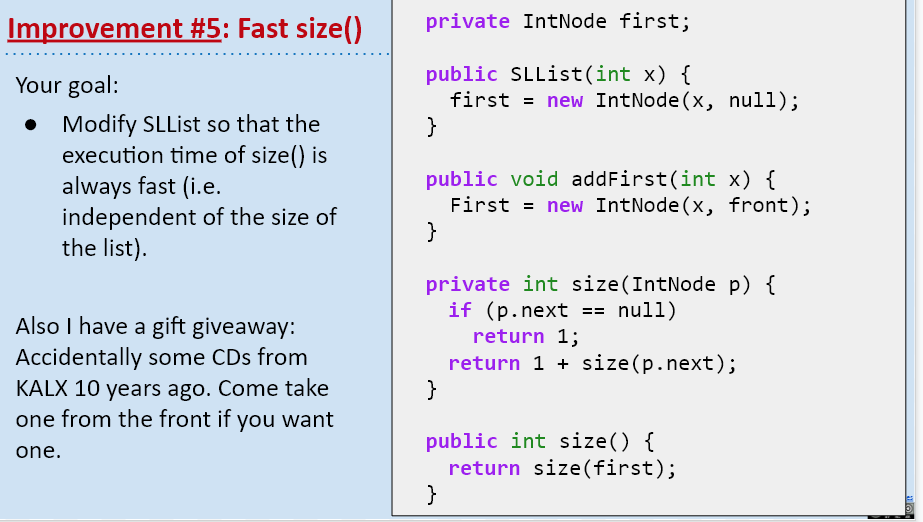
对于一条链表,如果我需要随着它的扩大,实时得到它的size,那么这个速度将会很慢,因为我们每一次调用size()都需要从后往前遍历,这中间有很多重复的操作。为了提升速度,我们应该实时保存每一个节点(链表)的大小。我们为SLList创建一个int字段,每次链表大小改变时,我们都改变这个字段的值。

在这里也能体现出SLList比nakedLinkedList的好处:
使用包装类对象,我们可以储存类似size的变量,每次链表大小发生变化时,我们只需要改变SLList对象的size字段即可。但是对于nakedLinkedList,我们需要为每一个节点对象都设置一个size字段,发生改变时,我们需要改变所有被影响的节点对象的字段,非常低效。

我们可以构造一个为空的SLLIst:
public SLList(){
first=null;
size=0;
}
但是这也会带来问题:
public void addLast(int x){
IntNode p=first;
while (p.next!=null){//此时p等于null,出现nullPointerException
p=p.next;
}
p.next=new IntNode(x,null);
size++;
}
我们可以对特殊情况进行修复:
if (p==null){
first=new IntNode(x,null);
return;
}
然而这样代码变得丑陋

最重要的是,不要经常对特殊情况进行修复,因为对于更大的数据结构会拥有更多的特殊案例。只有简单的代码才是好的代码,You want to restrict the amount of complexity in your life!我们应该找到一个适用于所有情况的相同的方法。
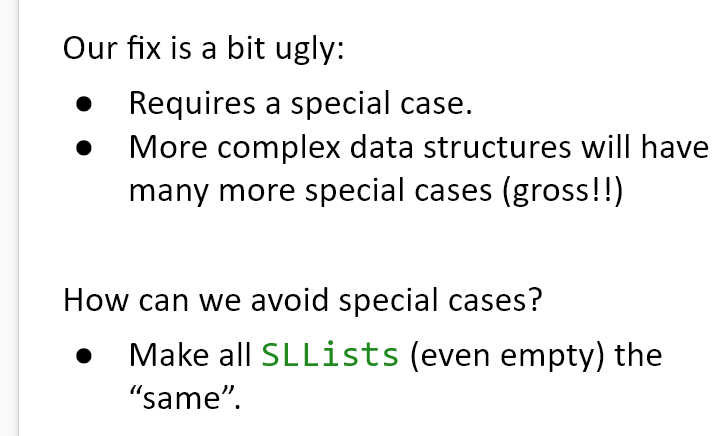
所以,为了让所有情况都相同(即链表不管有没有元素都是一样的),即使链表为空,SLList中也要有一个节点存在,这样我们就没有必要检查该节点是否为null(因为它永远都不为null)
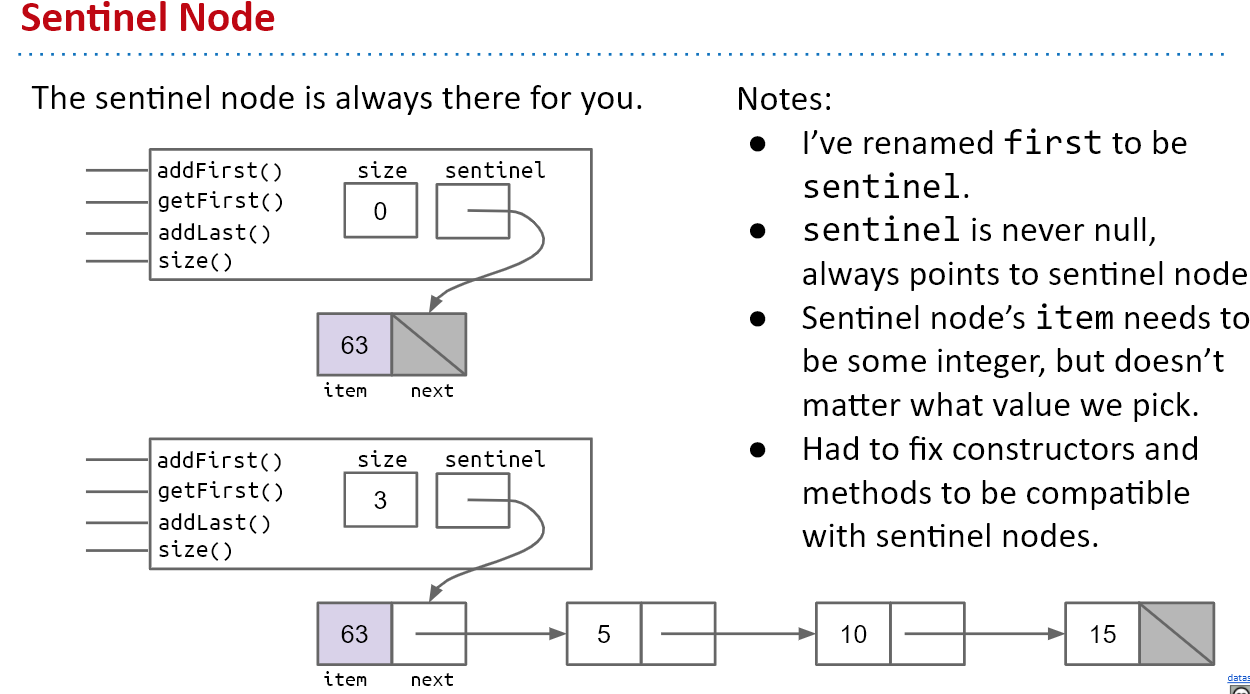
public class SLList {
private static class IntNode{
int item;
IntNode next;
IntNode(int x,IntNode next){
this.item=x;
this.next=next;
}
}
private int size;
private IntNode sentinel;
public SLList(int x){
sentinel=new IntNode(0,null);
sentinel.next=new IntNode(x,null);
size=1;
}
public SLList(){
sentinel=new IntNode(0,null);
size=0;
}
public void addFirst(int x){
sentinel.next=new IntNode(x,sentinel.next);
size++;
}
public int getFirst(){
return sentinel.next.item;
}
public void addLast(int x){
IntNode p=sentinel;
while (p.next!=null){
p=p.next;
}
p.next=new IntNode(x,null);
size++;
}
//cached edition
public int size(){
return size;
}
/**recursive edition
public int size(){
return size(first);
}
private int size(IntNode x){
if (x.next==null)return 1;
return 1+size(x.next);
}
*/
/*iterative edition
public int size(){
IntNode p=first;
int cnt=0;
while (p!=null){
p=p.next;
cnt++;
}
return cnt;
}
*/
}
Lecture5
对于单向链表SLList来说,对尾部进行操作非常地慢
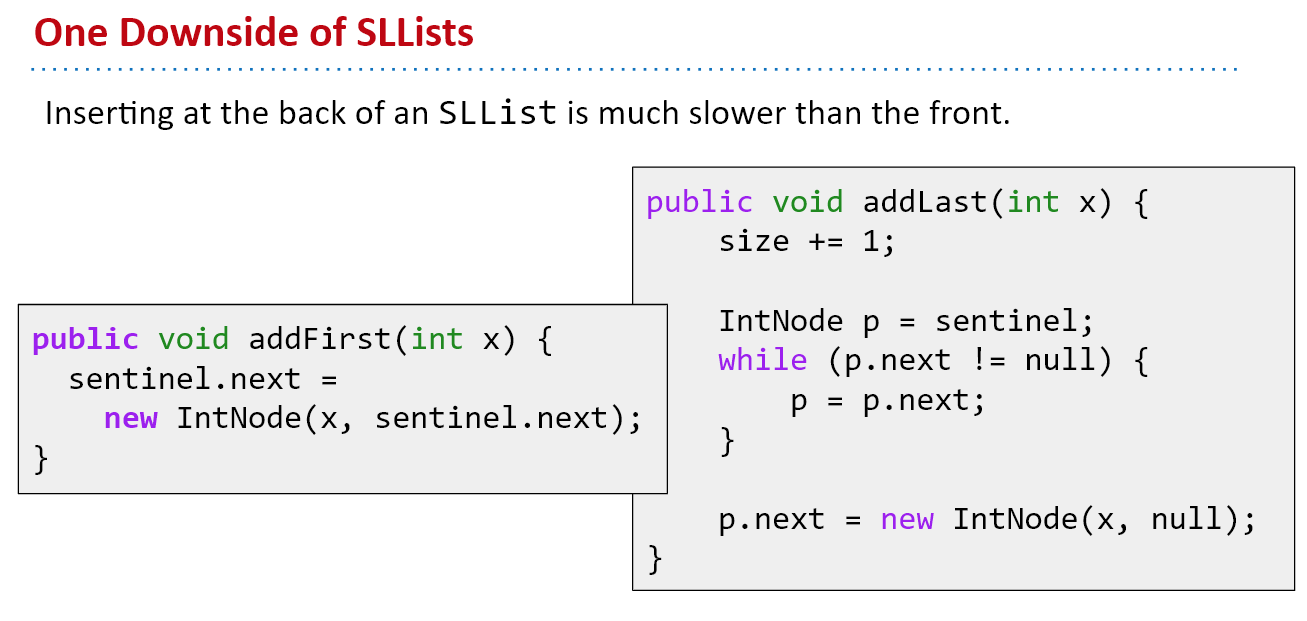
我们需要从前往后遍历,一直到链表的尾部才能添加节点。
解决方法:将尾结点缓存起来

然而对尾部进行删除操作却依旧缓慢。
删除尾结点需要改变它前面一个节点的指向,我们要获取前面的节点依然需要从前往后遍历一次。
所以,低效的根本原因是不能从尾结点向前访问。
我们可以使用双向链表

但是,双向链表也会有特例。
我们可以再添加一个尾部的Sentinel来避免special case

或者使用更好的方式:Circular Sentinel

2D Arrays
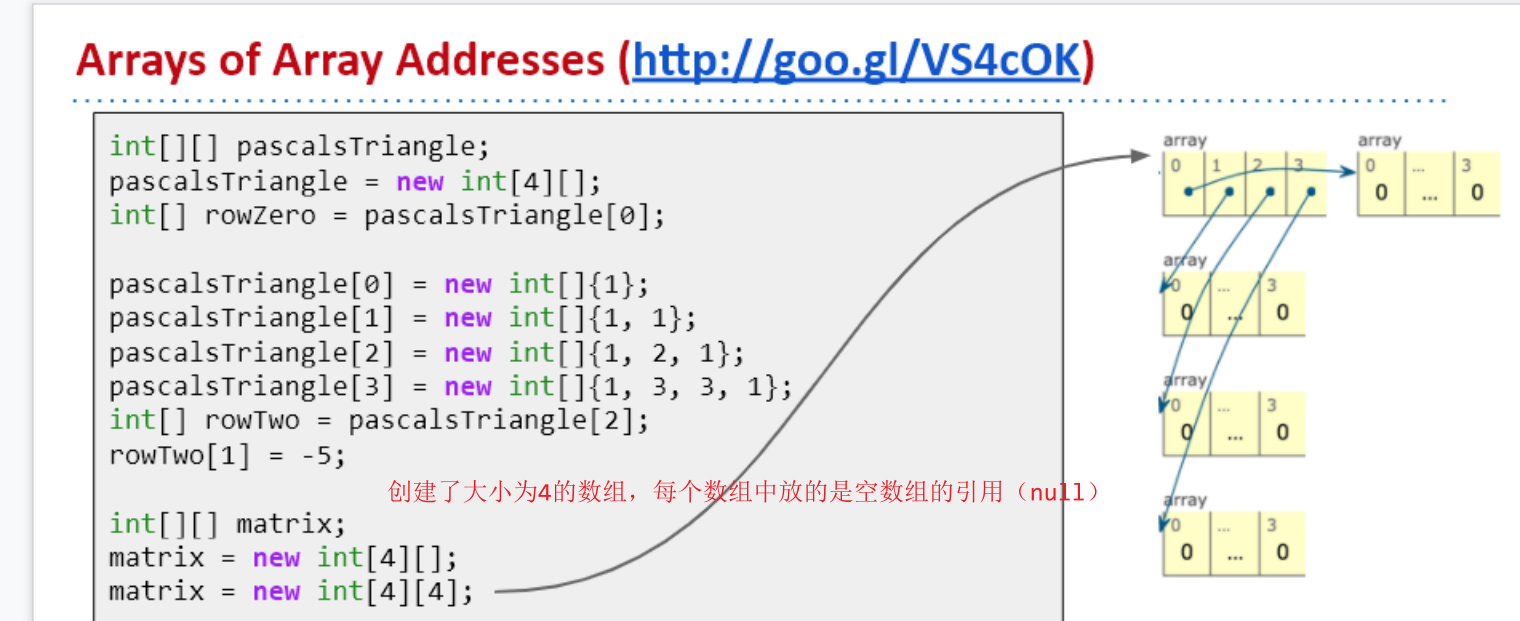

Lecture6
对于链表来说,进行随机访问非常慢,所以我们使用数组(ArrayList)来进行random access。
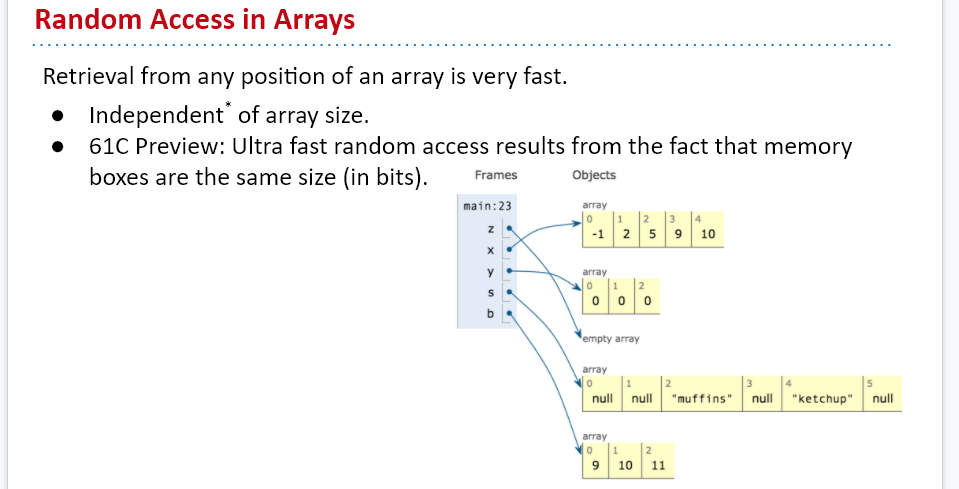
Invariants is very important


resizing array
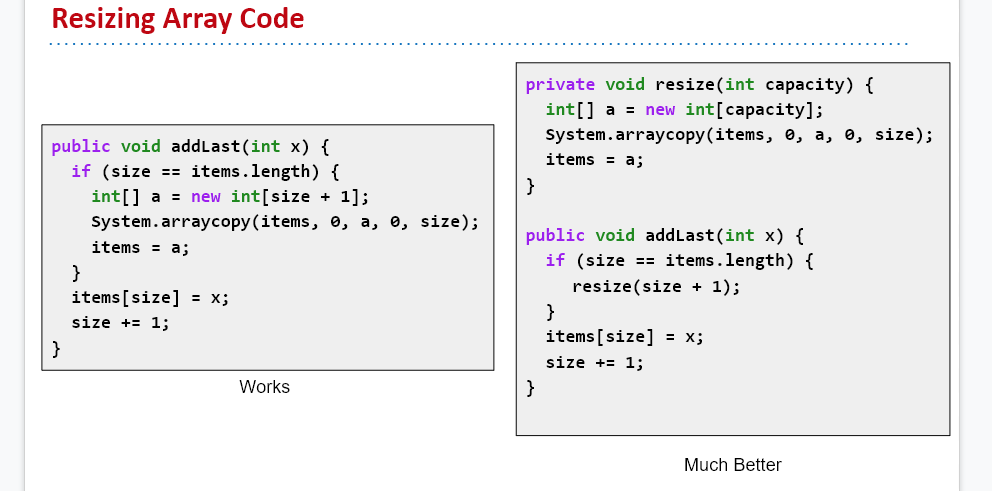
然而一个一个地增加数组的容量效率极低,所以我们需要成倍地扩容
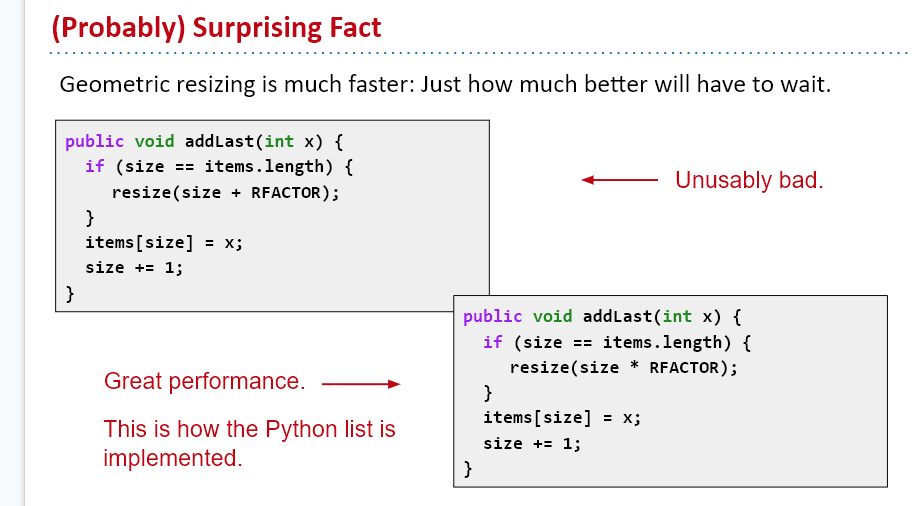
除了在数组容量不够时扩容,我们还需要在数组空间利用率太低的时候缩小数组的容量

当数组的利用率小于25%时,我们需要将数组的大小缩小为二分之一。
我们还可以使用泛型AList,使用泛型时要注意将没有用的空间置为null
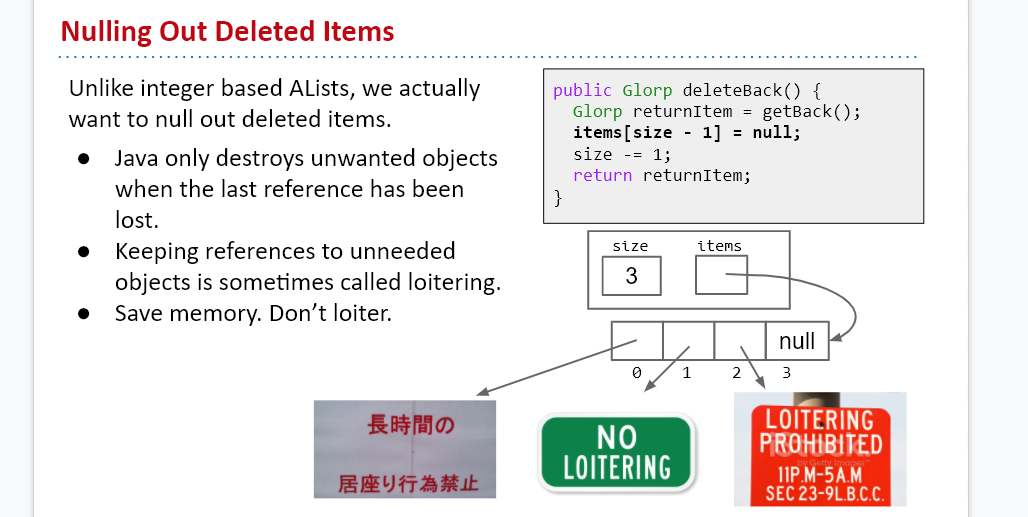
java只会销毁失去引用的对象,在AList中,我们调用了removeLast()后只是减小了size,原来的最后一个元素永远不会再被使用了,它应该被销毁。但是它的引用却仍然在数组中(当该元素是引用类型是),此时java并不会回收这个对象,所以为了节约空间,我们需要手动将数组的这个空间置为null,这样就没有引用指向该对象,它就会被java回收。
public class AList<Item> {
private Item[]items;
private int size;
public AList(){
items=(Item[]) new Object[100];
size=0;
}
public void resize(int capacity){
Item[]a=(Item[]) new Object[capacity];
System.arraycopy(items,0,a,0,size);
items=a;
}
public Item removeLast(){
return items[--size];
}
public void addLast(Item i){
if (size==items.length){
resize(2*size);
}
items[size]=i;
size++;
}
public Item getLast(){
return items[size-1];
}
public Item get(int i){
return items[i];
}
public int size(){
return size;
}
}
Lecture7
Test
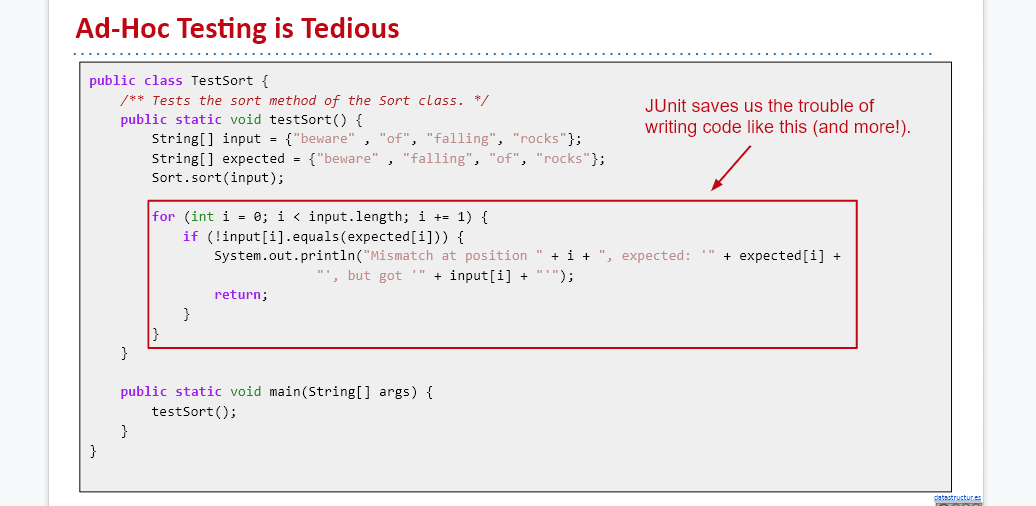
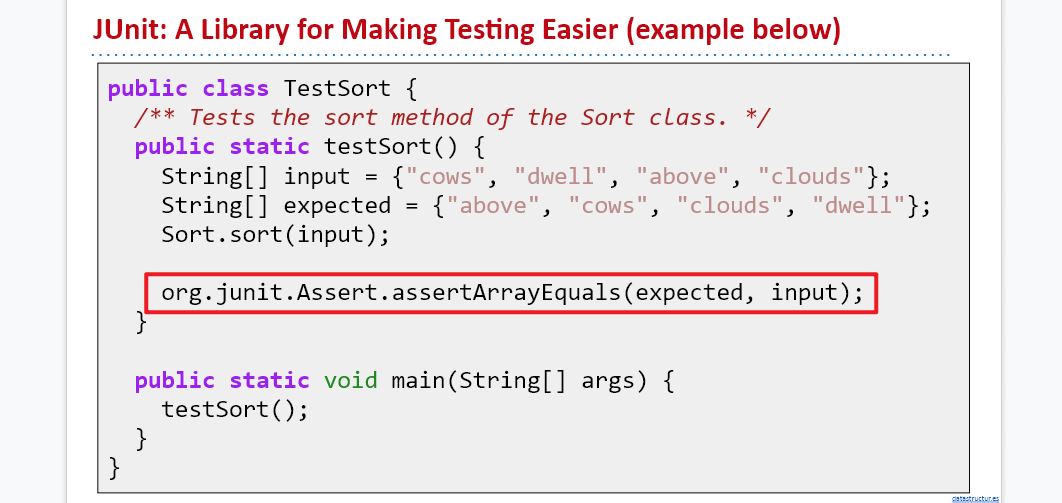
Selection Sort
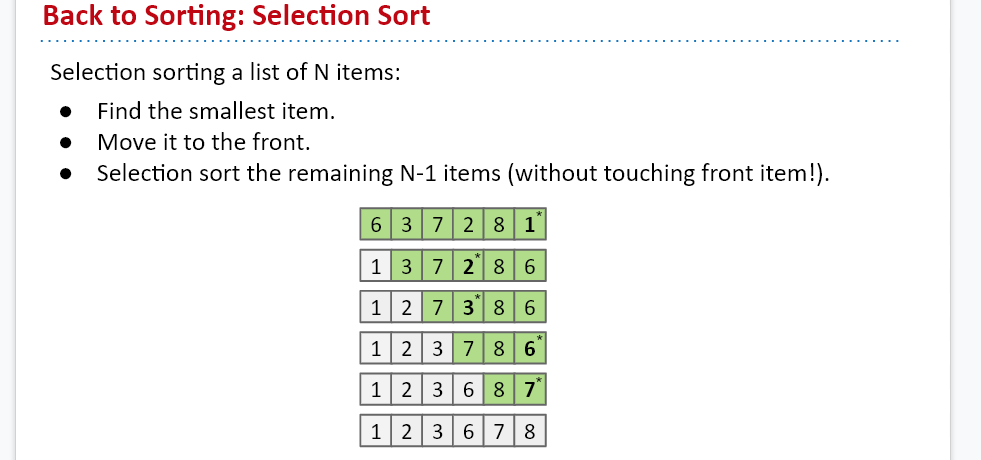
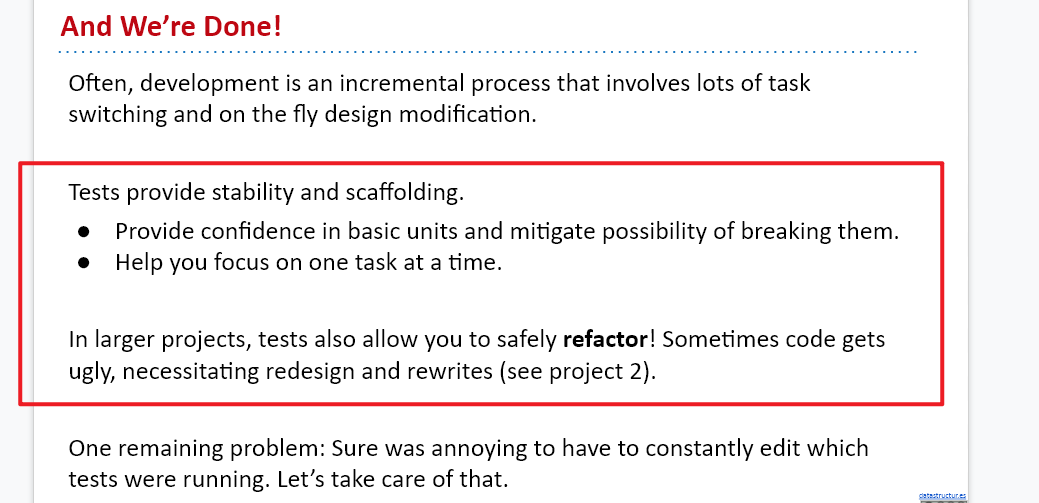
Lecture8
Interface


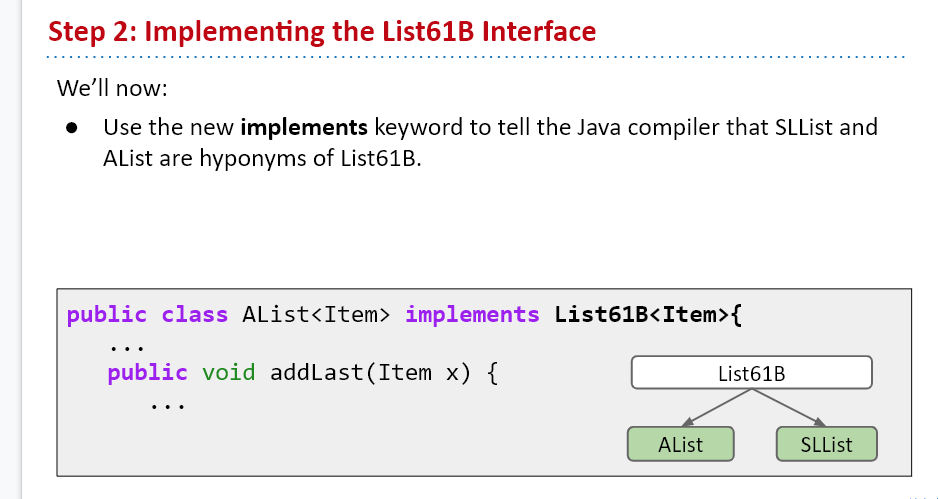
overriding VS overloading
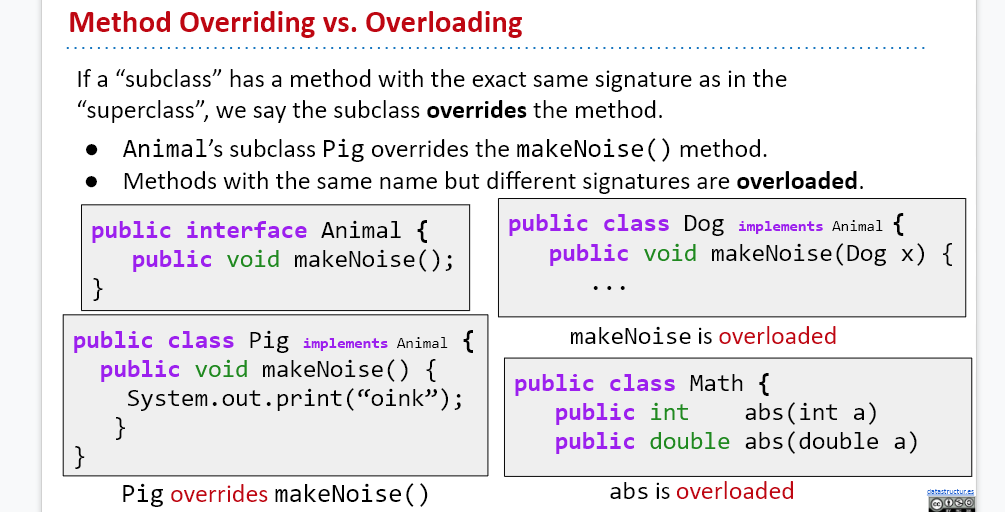
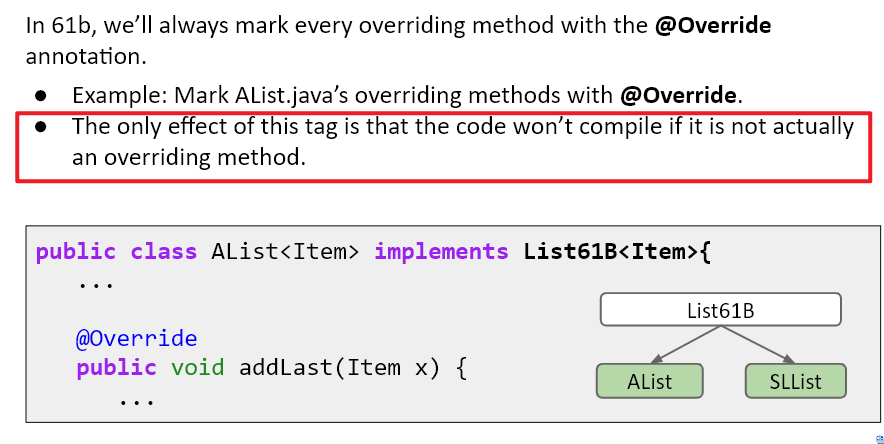
Method Overriding
If a subclass has a method with the exact same signature as in the superclass, we say the subclass overrides the method.
- Even if you don’t write @Override, subclass still overrides the method.
- @Override is just an optional reminder that you’ re overriding.
Why use @Override?
- Main reason: Protects against typos.
If you say @Override, but the method isn’t actually overriding anything, you’ll get a compile
error - Reminds programmer that method definition came from somewhere higher up in the inheritance hierarchy.
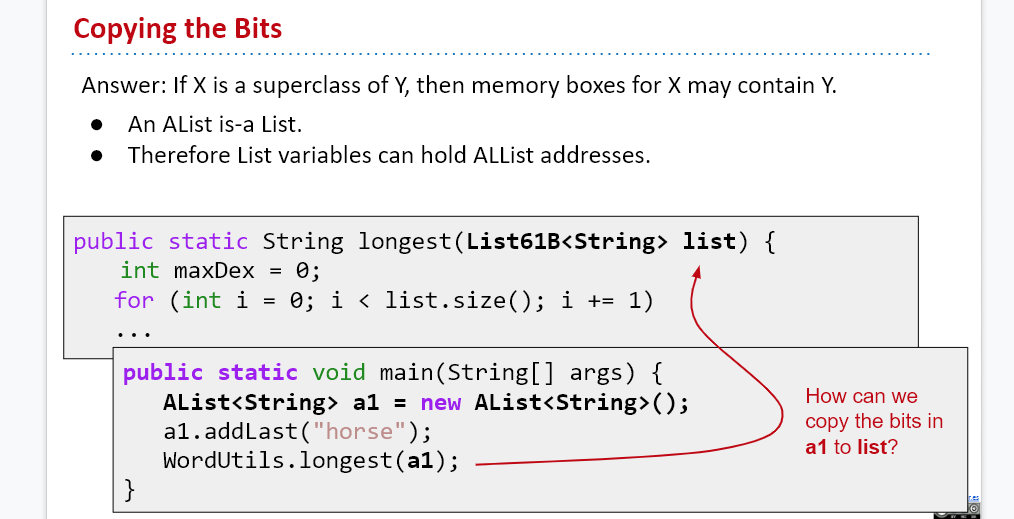
if X is a superclass of Y,then memory boxes for x may contain Y,that’s why subclass can be copied to superclass.
implementation inheritance(default method)
Interface inheritance:
- Subclass inherits signatures, but NOT implementation.
For better or worse, Java also allows implementation inheritance. - Subclasses can inherit signatures AND implementation.
Use the default keyword to specify a method that subclasses should inherit from an interface.
we can define a function to print the content of the list in the Interface List61B,Unlike Interface inheritance,which can only allow signature inheritance,its signatures and implementations will be both inherited by AList and SLList。
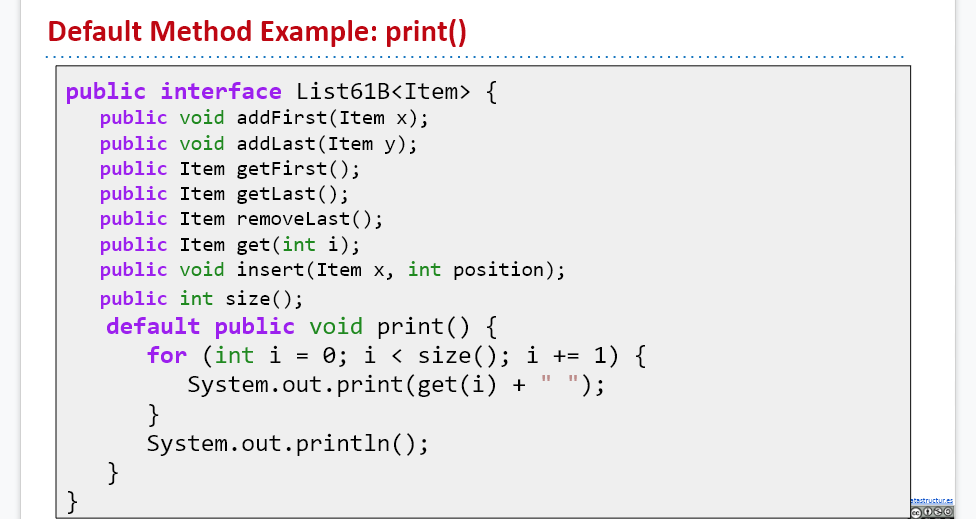
but then there is a question,this method is not efficient for both subclass
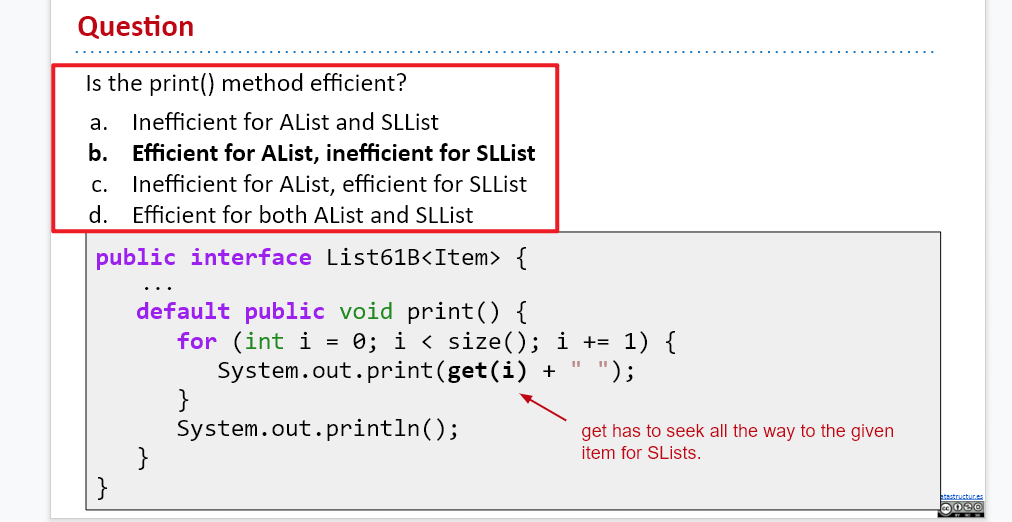
and if we dont like the default method, we can override default method

Dynamic Method Selection
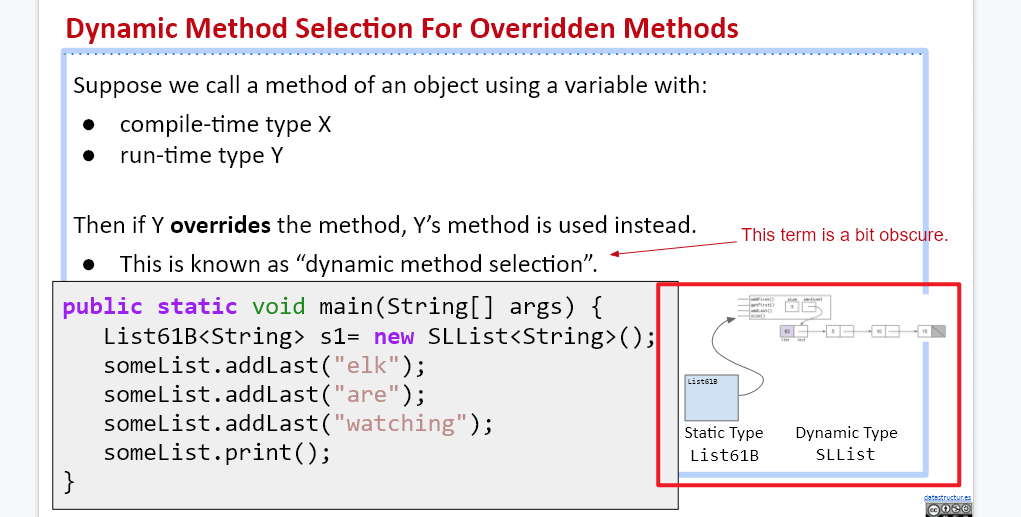
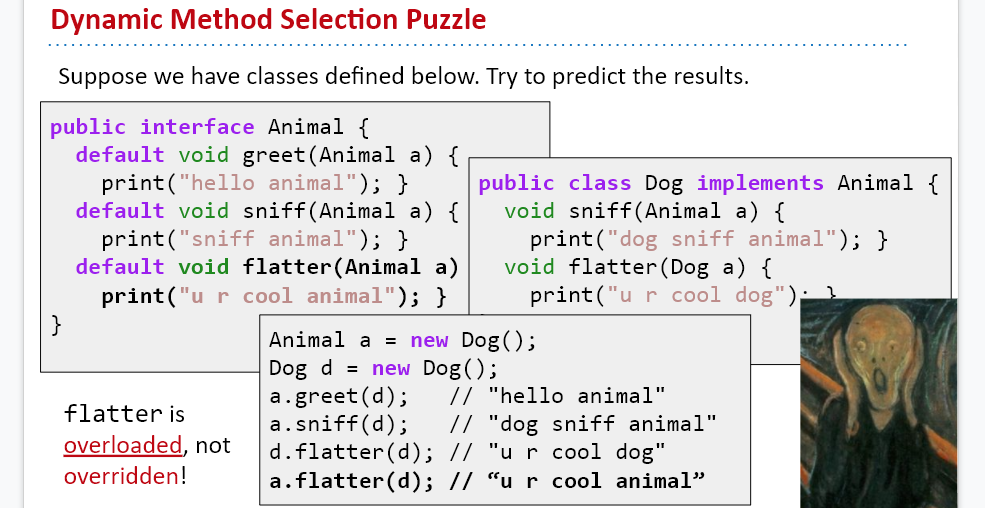
rule:调用方法时,首先进行编译,如果这个方法只有动态类型有,而静态类型没有,则编译不通过。只有两个类型都有相同的方法(即函数签名相同,如果只是函数名相同也不行,这只是重载),才能通过编译。在运行时,从最准确的类型(即动态类型)开始寻找该方法,如果动态类型重写了该方法,就调用动态类型的版本。如果动态类型没有重写方法,就调用静态类型的版本。
Lecture9
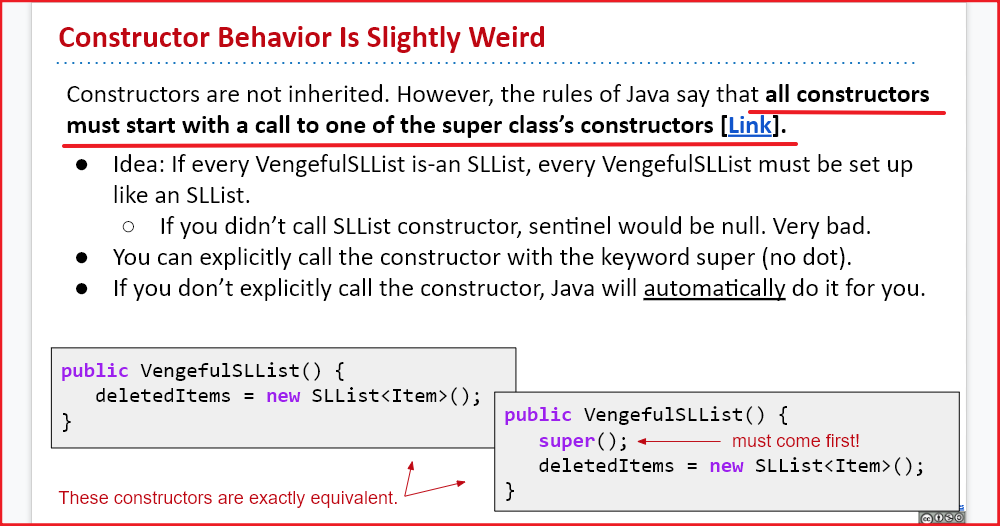
you can use parameter to specify a constructor,if you dont explicitly specify which of the superclass’s constructor to call,it will call the default one with no parameters。
encapsulation
when building large programs,our enemy is complexity。That’s the thing that makes a good programmer different from the bad programmer,the ability to handle complexity。
managing complexity is important to large project(e.g project2)
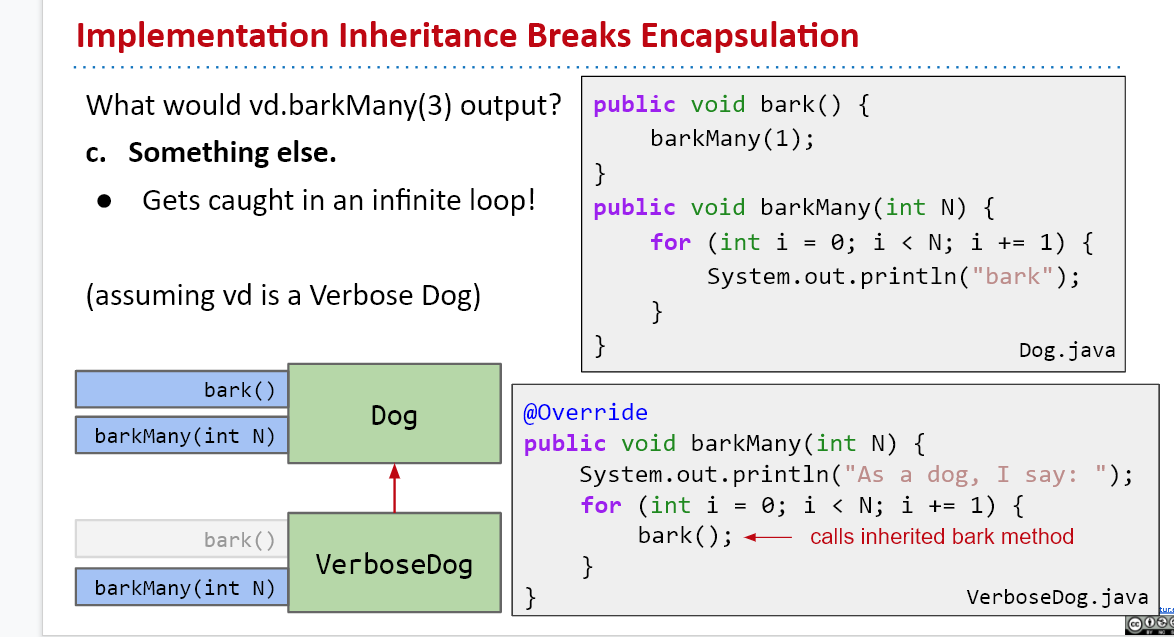
Casting
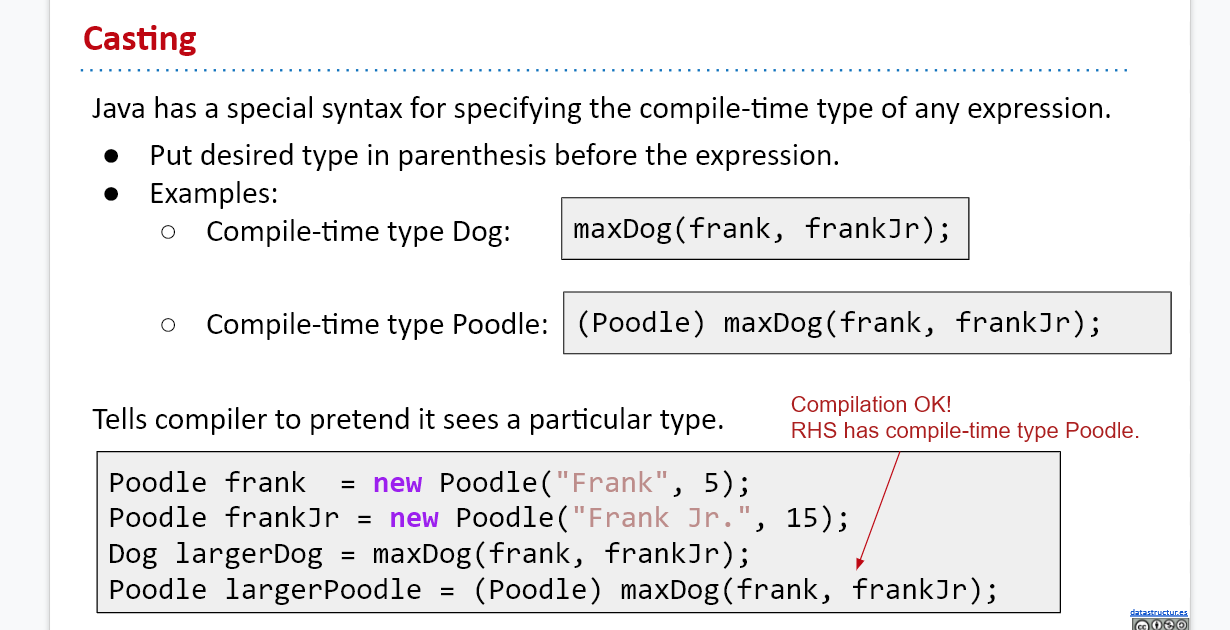
将父类对象赋值给子类对象时编译无法通过,但是我们可以对父类对象进行强制类型转换,此时父类对象的编译类型就是子类对象的类型,但是注意!父类对象的实际类型(即运行类型)并没有改变,如果该对象的实际类型就是父类,那么运行时会出现ClassCastException。如果父类的实际类型是子类的类型(以及子类的子类),那么可以通过编译。强制类型转换常用于使用多态时,要调用子类对象特有的方法,此时通过父类对象无法调用,我们就可以进行强制类型转换。
为了避免强制类型转换时出现ClassCastException,我们可以使用insistanceof来判断对象的实际类型是什么。
Lecture10
Comparable
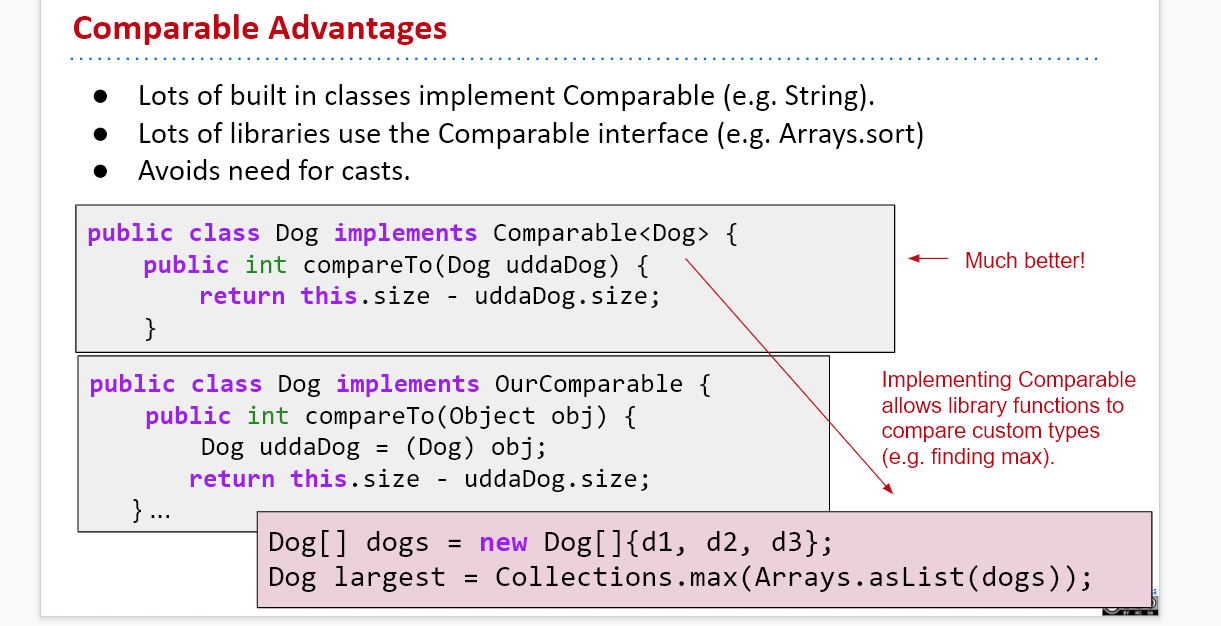
Compartor
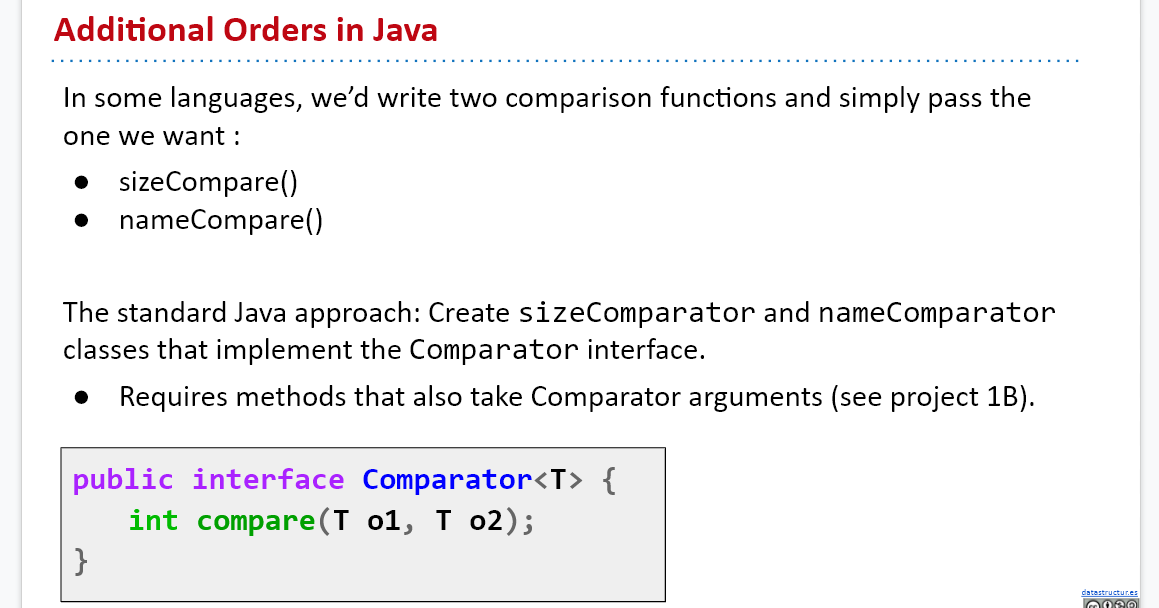
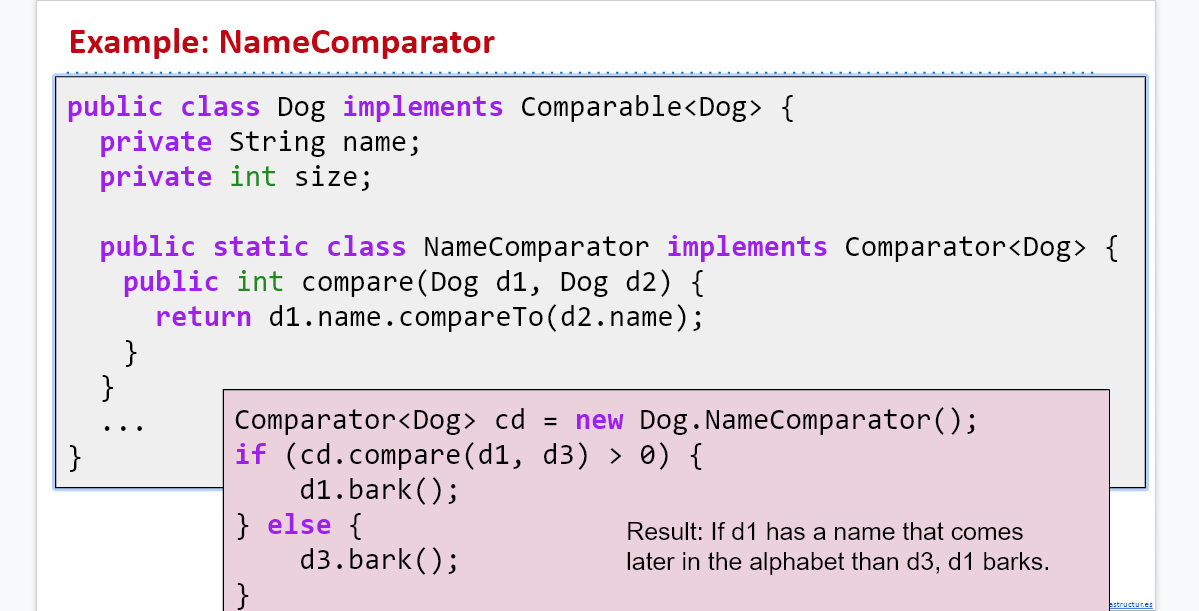
Summary
Interfaces provide us with the ability to make callbacks:
-
Sometimes a function needs the help of another function that might not have been written yet.
- Example: max needs compareTo
- The helping function is sometimes called a“callback".
-
Some languages handle this using explicit function passing.
def print_larger(x,y,compare,stringify): if compare(x,y): return stringify(x) return stringify(y)we can pass a function as parameter.
-
In Java, we can’t pass function as parameter.we do this by wrapping up the needed function in an interface
-
example:Arrays. sort ,the function needs to know how to sort,what the rule is.
-
In python,we can just use a function type as parameter,when users use this function,they can pass a function(specific rule of sort)to specify how to sort.
-
In java,we can pass an object and invoke this object’s method in the function to specify the rules.To make this,we need to set the parameter of function as a class.But we don’t know what object will be passed in,So we need a general interface with the function we need to fit all the object.**The class of object passed in must inplement the interface and override the function.**In that way,we can use the function in the Array.sort

use interface comparator as parameter,pass in an object which has overrided the comparator,and invoke the compare method of the object in the function.
-
Arrays. sort“calls back" whenever it needs a comparison.
-
Lecture11
exception
public class ArraySet<T> {
public int size;
public T[]items;
public ArraySet(){
items=(T[])new Object[100];
size=0;
}
public boolean contains(T x){
for (int i=0;i<size;i++){
if (x.equals(items[i]))
return true;
}
return false;
}
public void add(T x){
if (contains(x))
return;
items[size++]=x;
}
public int size(){
return size;
}
}
当我们add(null)时会出现异常,原因是在add()方法中调用了contains,x.equals(items[i])语句对null调用方法就会出现nullPointerException。
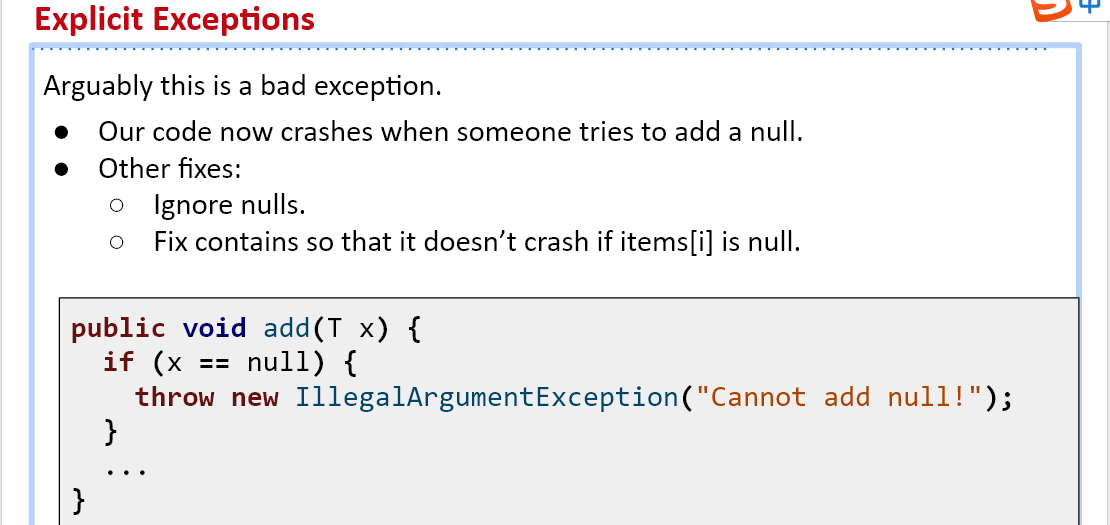
Iterator
如何实现for each?拆分为iterator
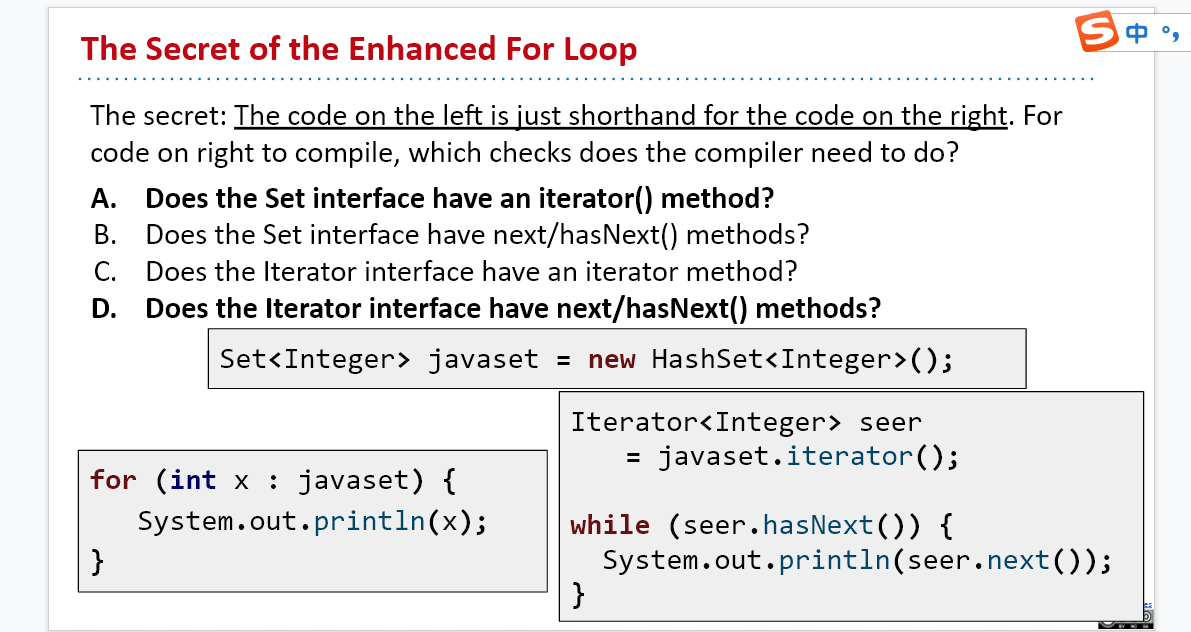
如何实现Iterator?在数据结构内部实现Iterator接口,实现hasNext和next方法,新增一个Iterator()方法,返回Iterator对象(即我们实现的Iterator类)。
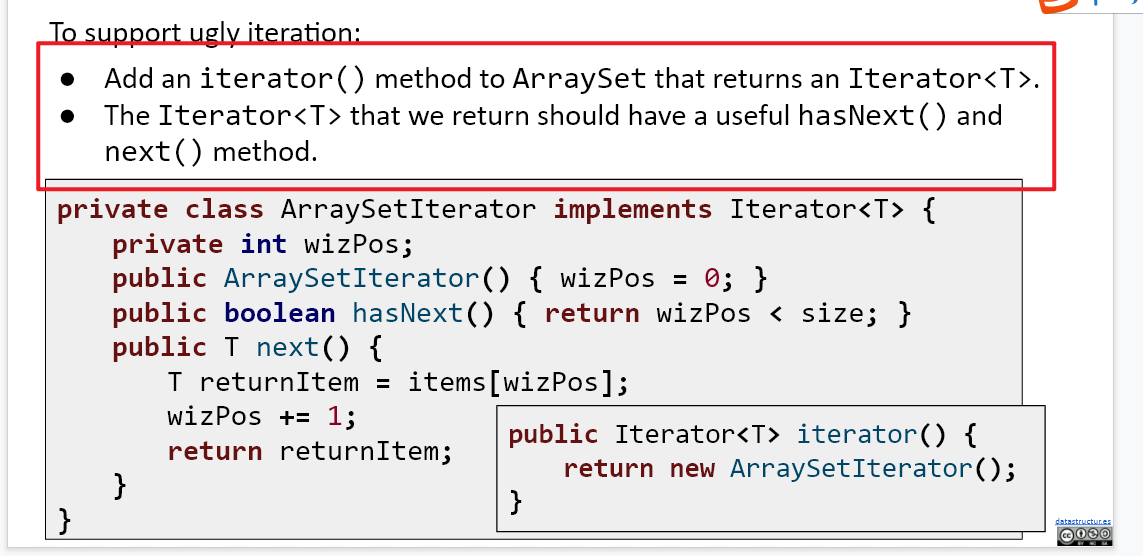
仅仅有Iterator()方法仍然不够,java并不知道该数据结构有Iterator()方法,我们需要将该类实现Iterable接口,告诉java,这个数据结构是可迭代的。
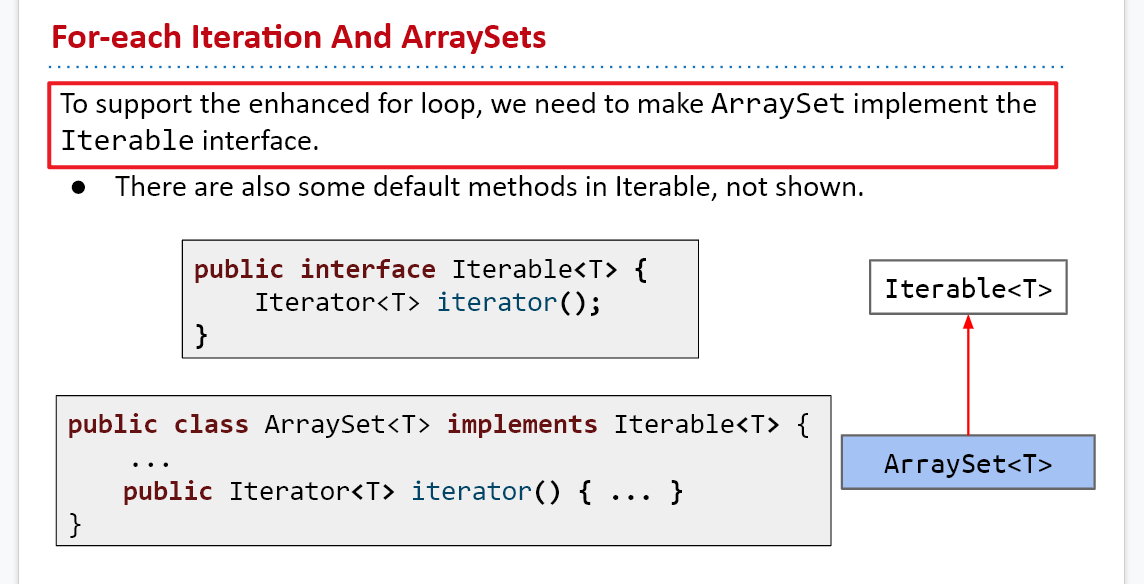
toString
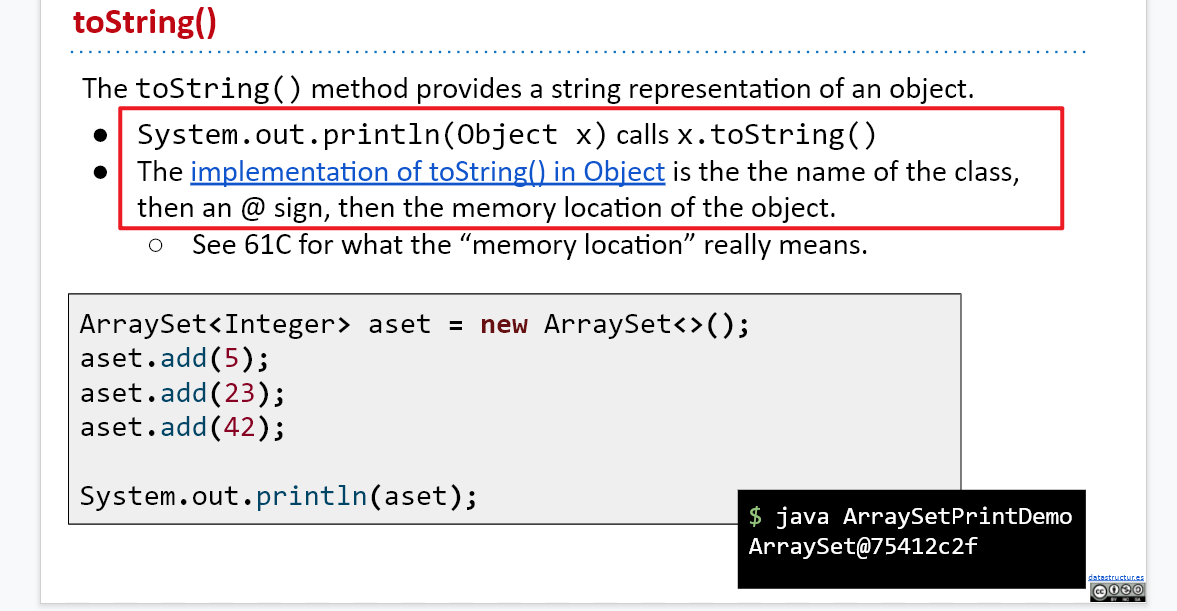
print(Object x)实际上执行的是print(x.toString),打印对象的地址。
@Override
public String toString() {
String returnString="{";
for (T item:this){
returnString+=item.toString();
returnString+=",";
}
returnString+="}";
return returnString;
}
改变String的执行速度非常慢,由于String对象inmmutable的,每修改一次String对象都要重新开辟空间创建新的对象,然后再进行修改。改用StringBuilding或StringBuffer
@Override
public String toString() {
StringBuilder returnString= new StringBuilder("{");
for (T item:this){
returnString.append(item.toString());
returnString.append(",");
}
returnString.append("}");
return returnString.toString();
}
equals
==比较的是两者的比特位,对于引用来说,==比较的就是两者是否指向同一个对象,而不是内容是否相同
默认的equals就是==,所以在我们自定义的类型中需要重写equals来比较对象真正的内容。
@Override
public boolean equals(Object obj) {
ArraySet<T>o=(ArraySet<T>)obj;
if (o.size!=this.size())
return false;
for (T item:this){
if (!o.contains(item))
return false;
}
return true;
}
问题是:当obj是其他类型时或是null时会失败
改进:
@Override
public boolean equals(Object obj) {
//当两个比较对象就是同一个对象时,直接返回true
if (obj==this)return true;
if (obj==null)return false;
//当两个比较对象的类型不同时,直接返回false
if (obj.getClass()!=this.getClass())return false;
ArraySet<T>o=(ArraySet<T>)obj;
if (o.size!=this.size())
return false;
for (T item:this){
if (!o.contains(item))
return false;
}
return true;
}
bonus
ArraySet.of
public static <Glerp> ArraySet<Glerp> of(Glerp... stuff){
ArraySet<Glerp> returnSet=new ArraySet<>();
for (Glerp x:stuff){
returnSet.add(x);
}
return returnSet;
}
public static void main(String[] args) {
ArraySet<String>arraySet1=ArraySet.of("hi","i","wanna","fuck","you");
}






















 717
717

 被折叠的 条评论
为什么被折叠?
被折叠的 条评论
为什么被折叠?








